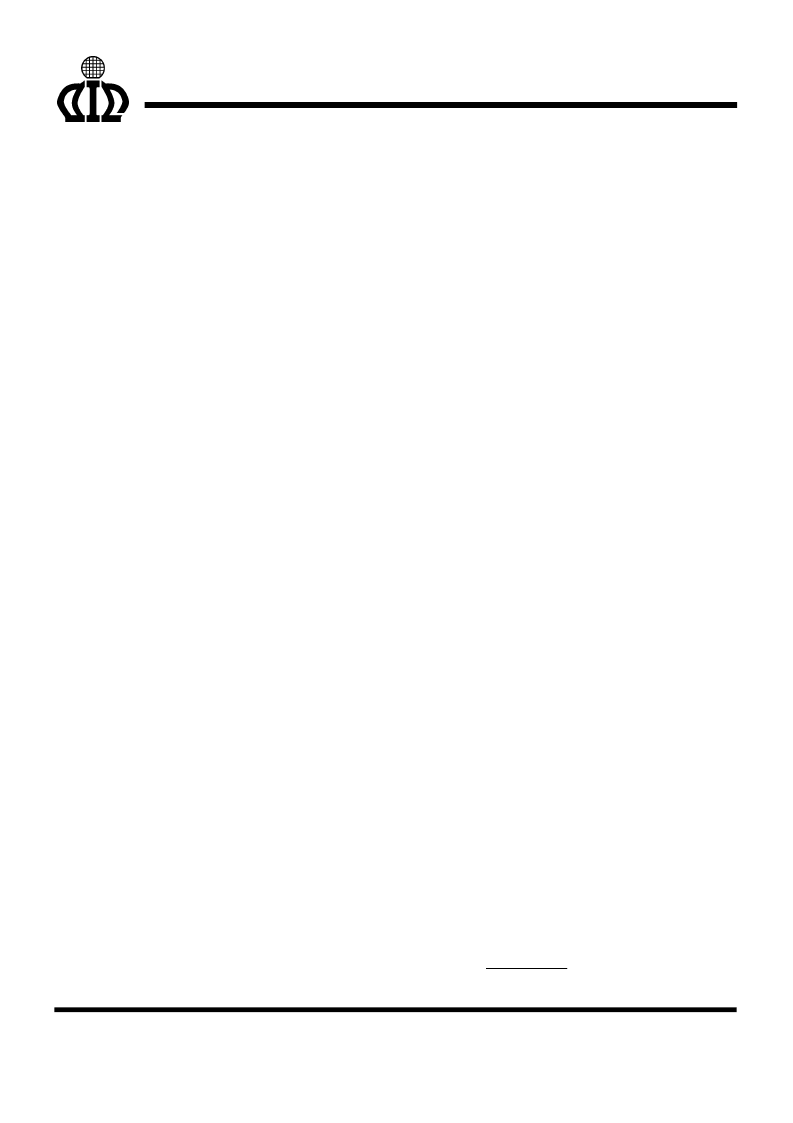- 您現(xiàn)在的位置:買賣IC網(wǎng) > PDF目錄376482 > AIC1731-30CVTR (Analog Integrations Corporation) 3A Fixed Low Dropout Linear Regulator (LDO) PDF資料下載
參數(shù)資料
| 型號: | AIC1731-30CVTR |
| 廠商: | Analog Integrations Corporation |
| 元件分類: | 基準(zhǔn)電壓源/電流源 |
| 英文描述: | 3A Fixed Low Dropout Linear Regulator (LDO) |
| 中文描述: | 3A固定低壓差線性穩(wěn)壓器(LDO) |
| 文件頁數(shù): | 9/10頁 |
| 文件大?。?/td> | 404K |
| 代理商: | AIC1731-30CVTR |

AIC1731
9
DROPOUT VOLTAGE (V
DROP
)
The dropout voltage is defined as the difference
between the input voltage and output voltage at
which the output voltage drops 100mV. Below
this value, the output voltage will fall as the input
voltage reduces. It depends on the load current
and junction temperature.
LINE REGULATION
Line regulation is the ability of the regulator to
maintain a constant output voltage as the input
voltage changes. The line regulation is specified
as the input voltage changes from V
IN
= V
OUT
+
1V to V
IN
= 7V and I
OUT
= 1mA.
LOAD REGULATION
Load regulation is the ability of the regulator to
maintain a constant output voltage as the load
current changes.
A pulsed measurement with an
input voltage set to V
IN
= V
OUT
+ V
DROP
can
minimize temperature effects.
The load regulation
is specified by the output current ranging from
0.1mA to 300mA.
CURRENT LIMIT (I
IL
)
AIC1731 includes a current limiting, which
monitors and controls the maximum output
current if the output is shorted to ground. This
can protect the device from being damaged.
THERMAL PROTECTION
Thermal sensor protects device when the
junction temperature exceeds T
J
= +155oC. It
signals shutdown logic, turning off pass transistor
and allowing IC to cool down. After the IC’s
junction temperature cools by 15oC, the thermal
sensor will turn the pass transistor back on.
Thermal protection is designed to protect the
device in the event of fault conditions. For a
continuous operation, do not exceed the absolute
maximum junction-temperature rating of T
J
=
150oC, or damage may occur to the device.
INPUT-OUTPUT CAPACITORS
Linear regulators require input and output
capacitors to maintain stability. Input capacitor at
1
μ
F with a 1uF aluminum electrolytic output
capacitor is recommended. To avoid oscillation,
ceramic capacitor is rejected.
NOISE BYPASS CAPACITOR
0.1
μ
F bypass capacitor at BP pin reduces output
voltage noise. And the BP pin has to connect a
capacitor to GND.
POWER DISSIPATION
The maximum power dissipation of AIC1731
depends on the thermal resistance of its case
and circuit board, the temperature difference
between the die junction and ambient air, and
the rate of airflow. The rate of temperature rise is
greatly
affected
by
configuration on the PCB, the board material,
and the ambient temperature. When the IC
mounting with good thermal conductivity is used,
the junction temperature will be low even when
large power dissipation applies.
The power dissipation across the device is
P = I
OUT
(V
IN
-V
OUT
).
The maximum power dissipation is:
=
the
mounting
pad
)
R
θ
(R
θ
)
T
(T
P
BA
JB
A
J
MAX
+
相關(guān)PDF資料 |
PDF描述 |
|---|---|
| AIC1731-33CVBG | 3A Fixed Low Dropout Linear Regulator (LDO) |
| AIC1731-15PVTR | 3A Fixed Low Dropout Linear Regulator (LDO) |
| AIC1731-18CVBG | 3A Fixed Low Dropout Linear Regulator (LDO) |
| AIC1731-18CVTR | 3A Fixed Low Dropout Linear Regulator (LDO) |
| AIC1731-25CVBG | 3A Fixed Low Dropout Linear Regulator (LDO) |
相關(guān)代理商/技術(shù)參數(shù) |
參數(shù)描述 |
|---|---|
| AIC1731-30PVBG | 制造商:AIC 制造商全稱:Analog Intergrations Corporation 功能描述:300mA, Low Dropout Linear Regulator with Shutdown |
| AIC1731-30PVTR | 制造商:AIC 制造商全稱:Analog Intergrations Corporation 功能描述:300mA, Low Dropout Linear Regulator with Shutdown |
| AIC1731-33CVBG | 制造商:AIC 制造商全稱:Analog Intergrations Corporation 功能描述:300mA, Low Dropout Linear Regulator with Shutdown |
| AIC1731-33CVTR | 制造商:AIC 制造商全稱:Analog Intergrations Corporation 功能描述:300mA, Low Dropout Linear Regulator with Shutdown |
| AIC1731-33GVTR | 制造商: 功能描述:300MA LDO LINEAR REGULATOR WITH SHUTDOWN 制造商:undefined 功能描述:300MA LDO LINEAR REGULATOR WITH SHUTDOWN |
發(fā)布緊急采購,3分鐘左右您將得到回復(fù)。